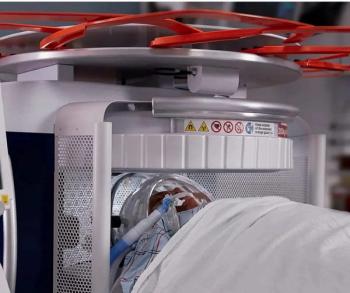
DWI Shows Some Potential to Predict Post-TIA Stroke Risk
Evidence of brain injury is most prevalent in patients with physical symptoms and long duration of symptoms
An acute diffusion lesion is evident in one third of patients who have had a transient ischemic attack,1 and those patients may be at higher risk for stroke,2 according to a pair of studies presented at the 2007 International Stroke Conference in San Francisco in February.
Those patients most likely to show evidence of brain injury on MR diffusion-weighted imaging (DWI) are patients who have motor symptoms or whose symptoms last longer (i.e., a mean 60 minutes compared with a mean 30 minutes among patients whose imaging studies are negative for brain injury).1 The findings were the work of the MRI in TIA Collaborative Group, a multi-institutional international endeavor.
The group, which included 11 academic medical centers, looked at all studies within the literature that addressed DWI findings in patients who had experienced a TIA and also looked at data from 808 patients who met traditional criteria for TIA (complete resolution of symptoms within 24 hours) from 9 of the 11 participating centers.
Patients' mean age was 69; 58% were men. Median duration of symptoms was 55 minutes. Lesions were observed on DWI in 33% of patients.
Patients with lesions typically had a longer duration of symptoms. The longer symptoms persisted, the researchers found, the more likely that brain injury would be detected on DWI. Indeed, brain injury was more likely than not to have developed in patients whose symptoms persisted for longer than 6 hours.
Brain injury was also more likely to be detected in patients who had motor symptoms. Positivity for lesions on DWI was more common among patients who had an MR scan within 24 hours of symptom resolution than among patients who had an MR scan outside the 24-hour postresolution time frame.
PREDICTIVE VALUE OF DWI
A study by a team from Massachusetts General Hospital demonstrated that DWI lesion positivity and a history of prior TIAs heightens stroke risk immediately following a TIA. Identifying patients who present with TIA and have these features might allow clinicians to head off an imminent stroke, according to the investigators.2
They looked at 325 consecutive patients who had experienced a TIA and underwent DWI within 72 hours of symptom onset. Age, symptom duration, blood pressure, speech disturbance, and motor symptoms were all evaluated. Risk in relation to these factors was predicted using the ABCD score (a simple scoring method derived from the Oxfordshire Community Stroke Project, a prospective study that comprehensively looked at cardiovascular disease in 105,000 persons presenting to general practitioners in Oxford, U.K.). The predictive value was then calculated for ABCD score, DWI lesion positivity, and history of TIA.
While hospitalized, 12 (3.7%) of patients experienced stroke and 21 (6.5%) experienced another TIA. The positive predictive value for stroke for ABCD score was 4.5%, compared with 8% for lesion positivity on DWI, and 8.9% for history of previous TIA. The researchers concluded that careful examination of clinical history and DWI findings-"irrespective of other clinical features"-could reliably identify patients at risk for stroke following a TIA. They suggested that proactive identification of such patients and preventive intervention could potentially make inhospital stroke care more efficient.
REFERENCES
- 1. Shah SH, Saver JL, Kidwell CS, et al. A multicenter pooled, patient-level data analysis of diffusion-weighted MRI in TIA patients. Stroke 2007;38:463.
- 2. Ay H, Arsava EM, Koroshetz WJ, Sorensen AG. Clinical imaging predictors of in-hospital stroke risk in patients with TIA. Stroke 2007;38:459.
Newsletter
Stay at the forefront of radiology with the Diagnostic Imaging newsletter, delivering the latest news, clinical insights, and imaging advancements for today’s radiologists.

























